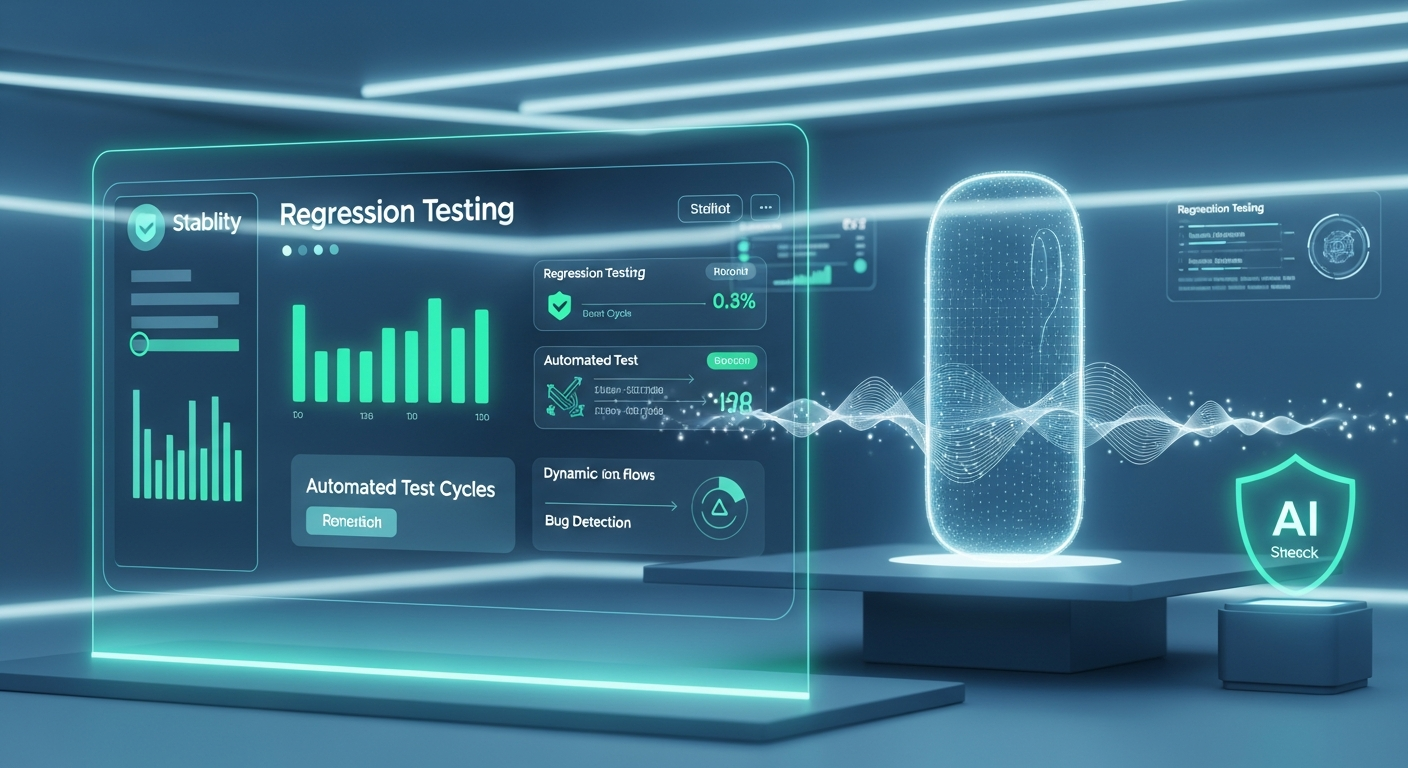Why Regression Testing in Software Testing Is the Unsung Hero of Product Stability in 2025
DSSP2025-11-26T09:57:32+00:00The Quiet Force Behind Software Testing Product
In the boardrooms of tech giants and startups alike, phrases like “innovation velocity,” “AI-driven development,” and “cloud-native deployment” dominate conversations. But there’s one term that rarely gets its due credit regression testing in software testing. It doesn’t sound glamorous. There’s no shiny keynote presentation about it. Yet, it quietly safeguards everything modern enterprises stand for stability, trust, and consistency. Behind every smooth app launch, every seamless update, and every bug-free product experience lies the invisible rigor of regression testing. It’s the guardian that ensures that yesterday’s code still works tomorrow. As we step into 2025 an era of automation, AI, and relentless software iteration regression testing is not just a technical necessity; it’s a strategic differentiator.
Regression Testing: The Unsung Hero of the software testing
Regression testing is, quite simply, the process of checking whether new changes break existing functionality. But in modern software testing, that definition feels outdated. Today, regression testing is an adaptive, intelligent discipline. It’s not about running old test cases again it’s about ensuring innovation doesn’t destroy what already works. Think of it as the immune system of software. Every new feature is a potential virus; regression testing identifies what might get sick before users ever feel the symptoms. At companies like Microsoft and Intel, regression testing has evolved into a continuous, automated feedback loop baked directly into CI/CD pipelines, catching issues within minutes instead of days. It’s not just QA; it’s engineering insurance.
The Business Case for Regression Testing: Why CFOs Should Care
Testing rarely gets executive attention until something breaks. But regression testing deserves a seat at the table. A 2024 Capgemini World Quality Report found that regression testing accounts for 26% of all QA effort across global enterprises. Yet, when done right, it can reduce post-release defects by up to 80%. That’s not just an IT metric that’s a bottom-line impact. When regression testing is ignored, production failures, brand damage, and customer churn become inevitable. When regression testing is prioritized, companies ship faster, maintain uptime, and protect customer trust. In an age where a two-hour outage can cost millions, stability is strategy.
The Evolution: From Manual Testing to Predictive Assurance
In the early 2000s, regression testing was a manual, repetitive chore. QA teams spent nights running scripts, often with limited visibility into what actually broke. Fast forward to 2025, and we’ve entered an era of predictive regression testing. Thanks to machine learning and automation, modern software testing platforms analyze code changes, automatically detect dependencies, and prioritize high-risk areas. Regression testing has evolved from reactive debugging to proactive assurance. At Google, internal frameworks like TAP (Testing Automation Platform) run hundreds of millions of automated regression tests daily ensuring every change scales safely across billions of users. This is not manual QA anymore. This is algorithmic quality governance a system that anticipates issues before they surface.
The Human Element: Where Intuition Meets Intelligence
Technology doesn’t drive transformation people do. Automation can execute faster, but it can’t think contextually. Human testers bring empathy, intuition, and business awareness to testing strategy. At Intel, QA engineers collaborate with developers and product managers to define critical customer flows the areas where a regression could cause the most business disruption. Regression testing isn’t about testing everything; it’s about testing what truly matters.
Automation and AI: The Dynamic Duo Redefining Software Testing
Automation has been the game-changer for regression testing. What once took weeks can now be done in hours even minutes with frameworks like Selenium and Cypress. AI-driven tools now do more than run tests they decide which tests to run. They detect code changes, identify redundant tests, repair broken scripts, and predict where regressions might occur. This isn’t just about faster QA cycles it’s about smart testing ecosystems. The future belongs to QA organizations that merge machine precision with human oversight.
Continuous Regression Testing in the CI/CD Pipeline
Modern development pipelines run like high-speed trains features get built, merged, and deployed continuously. There’s no stop button. Regression testing ensures that every code change is validated immediately. Automated regression tests now trigger with every commit, providing instant feedback to developers. At Microsoft Azure, continuous regression suites run 24/7, validating infrastructure changes across global data centers in real time. Regression testing has officially become the backbone of DevOps culture.
Regression Testing in AI, Cloud, and API Ecosystems
AI systems, API integrations, and microservices are deeply intertwined. A single code change in one component can cause ripple effects across the entire digital ecosystem. Regression testing in cloud-based software testing now ensures compatibility, scalability, and data consistency across distributed environments. For AI-driven products, regression testing ensures that model updates don’t degrade performance. For API-driven ecosystems, it validates that downstream applications still behave as expected.
The Cost of Ignoring Regression Testing: Lessons from the Field
History is full of cautionary tales where companies learned this lesson the hard way. A fintech app introduced a new feature that broke an old algorithm, leading to a compliance fine. A healthcare platform skipped regression testing during a rapid release a minor update caused patient data mismatches. An e-commerce giant saw checkout failures during Black Friday. Each failure had one thing in common: they didn’t validate the old before releasing the new. Regression testing isn’t an expense it’s insurance against digital disaster.
The Future: Regression Testing as a Business Differentiator
By 2025, regression testing has moved from the basement to the boardroom. It’s a core pillar of business resilience. Companies that master regression testing release faster, recover faster, and retain customer trust longer. We’re entering an era of predictive QA where systems use data to forecast regression risks before code even ships. Regression testing becomes more than QA it becomes a decision-making framework for intelligent software delivery.
The Human Factor: Where Quality Becomes Culture
Tools may get smarter, but culture sustains excellence. At Intel, teams embed a mindset called Quality First every commit and sprint includes regression checks. That’s the mindset modern enterprises must adopt: quality as a shared responsibility, not a final step. Regression testing embodies this spirit quiet, consistent, and deeply human.
Conclusion: Regression Testing the Silent Standard-Bearer of Trust
Regression testing in software testing is more than a process it’s a promise. A promise that innovation will never outpace stability. That progress won’t come at the expense of trust. In 2025 and beyond, the companies that win won’t be those that move fastest, but those that move boldly without breaking what matters most.















Leave a Reply